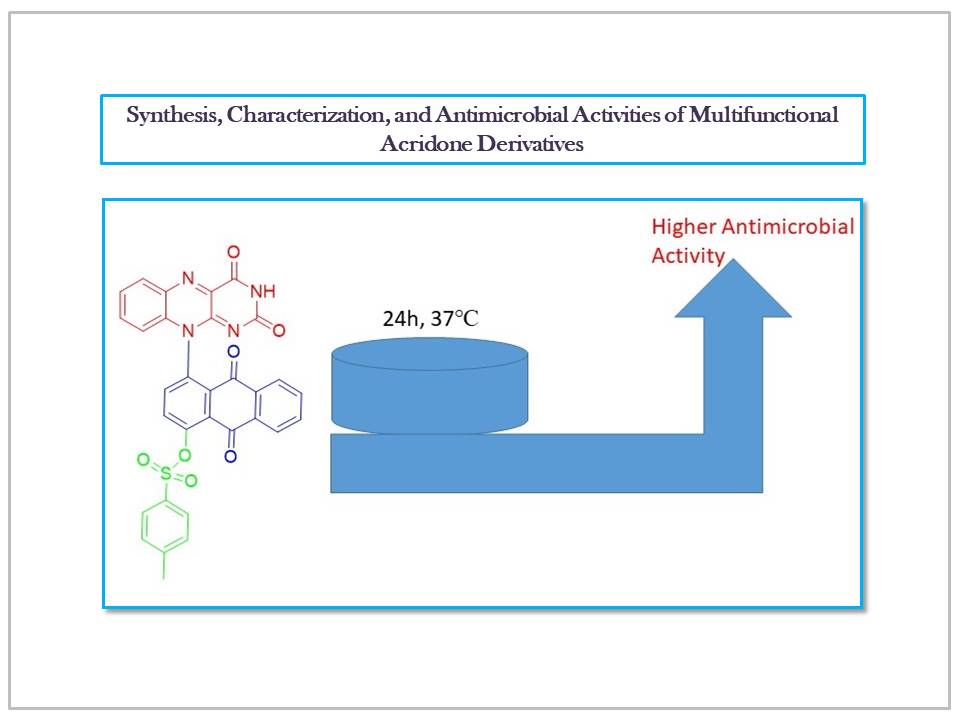Chemical Science & Engineering Research
Title
Synthesis, Characterization, and Antimicrobial Activities of Multifunctional Acridone Derivatives
Authors
Ismail Maigari Adamu,a Samaila Abubakar*b and Danbature Wilson Lamayib
aDepartment of Science Laboratory Technology, Gombe state Polytechnic Bajoga, Gombe State, Nigeria.
bDepartment of Chemistry, Gombe State University, P.M.B. 127 Gombe, Gombe State, Nigeria.
*Corresponding author E-mail address: sabubakar@gsu.edu.ng (Samaila Abubakar)
Article History
Publication details: Received: 14th September 2022; Revised: 16th October 2022; Accepted: 16th October 2022; Published: 03rd November 2022
Cite this article
Adamu I. M.; Abubakar S.; Danbature W. L. Synthesis, Characterization, and Antimicrobial Activities of Multifunctional Acridone Derivatives. Chem. Sci. Eng. Res., 2022, 4(11), 8-12.

Abstract
The synthesis and antimicrobial application of acridone derivatives have been reported in this work. Despite the huge progress in the development of acridone and acridine-based drugs, drug resistance is on the rise hence the need to adopt new strategies for the development of more aggressive drugs. In pursuance of this principle, we have designed and developed two new bifunctional compounds M2 and M3 that have both the acridone and acridine moieties incorporated as one compound. This is due to the need to harness the combined synergistic effect obtainable from both the acridone and the acridine motifs. The synthesized compounds were characterized using FT-IR, NMR, and Mass Spectrometry and later screened for antimicrobial activities against three gram-negative bacteria Escherichia coli (E-Coli), Klebsiella pneumoniae (Kleb), and Pseudomonas aeruginosa (pseudo), one gram-positive bacteria Staphylococcus aureus (Staph) and two Fungi Mucor species and Aspergillus niger. The antimicrobial test was conducted using disc diffusion methods and based on the concentrations of 100, 200, 300, and 400 μg/ mL, significant activities were recorded for both compounds for example Klebsiella pneumonia showed good antimicrobial activities with an inhibition zone of 15-24 mm. The result of antimicrobial activities indicates that compound M3 has strong activity against afore mentioned microorganisms.
Keywords
acridone derivatives; acridines; multifunctional compounds; antimicrobial; synthesis